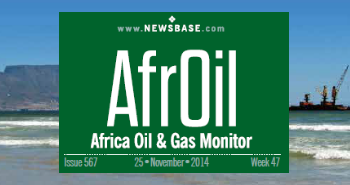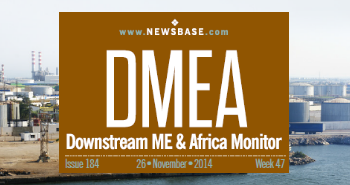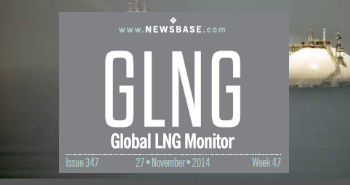Tanzania LNG’s potential pitfalls
The initial HGA represents a triumph for Tanzania’s president, who has been working hard to revive the stalled $30bn deal, but the project’s timeline may be overly ambitious
WHAT: Tanzania’s government has signed an initial host government agreement (HGA) with Equinor and Shell.
WHY: The document supposedly paves the way for the parties to strike a deal by year-end and begin production a few years later.
WHAT NEXT: The schedule for implementation of the deal will be hard to keep in light of decarbonisation deadlines and competition from other LNG suppliers.
Since she assumed office in March of last year, Tanzania’s President Samia Suluhu Hassan has said repeatedly that she views the oft-delayed Tanzania LNG scheme as one of her highest economic priorities.
In doing so, she has set herself apart from her predecessor John Magufuli, who devoted much more of his attention to the East African Crude Oil Pipeline (EACOP), the midstream component of the Lake Albert Development Project (LADP). EACOP will pump more than 200,000 barrels per day (bpd) of oil from the Kingfisher and Tilenga fields along a 1,443-km route from western Uganda to the Tanzanian port of Tanga.
Suluhu is a firm supporter of EACOP, which is expected to account for about half of LADP’s $10bn budget. But she has also been working for more than a year to restart negotiations on the $30bn Tanzania LNG project and keep them going – unlike Magufuli, who did little to sort out the commercial disputes that arose between the government and the international oil companies (IOCs) that were involved in the project.
Her efforts have now borne fruit. On June 11, her government signed an initial Host Government Agreement (HGA) on the project with Equinor (Norway) and Shell (UK), the operators of the three offshore blocks that are slated to supply feedstock to the future Tanzania LNG plant. In turn, this document paves the way for additional negotiations toward a final HGA and the other agreements needed to secure a final investment decision (FID) on the scheme.
Suluhu said after the signing ceremony that she expected Tanzania LNG to benefit the country in many ways. This project is “very unique, as it brings both capital and revenue,” she remarked. “Therefore, when completed, the project will change the country’s economic outlook and unlock the economic growth and capture benefits from LNG exporting in the global market.”
She also indicated that she expected work on the scheme to move forward quickly now that this first step had been taken. “I long to see phase two of the negotiations being timely wrapped up [in December of this year], so that we pave the way for the project’s implementation as planned later in 2025,” she was quoted as saying by The Citizen.
The president appears to be saying that her administration expects work to proceed quickly enough that Shell and Equinor can start offshore gas production in 2025 – and that the LNG plant can begin operating in the same year. If so, this is a more ambitious timeline than previously discussed, as Tanzanian authorities have said in the past that they believed construction work on the LNG plant might start in 2023, in time for production to begin in 2028.
Ambitious schedule
But according to David Thomson, vice president for sub-Saharan Africa research at Welligence Energy Analytics, all of these target dates could be overly optimistic.
Thomson emphasised that Tanzania did have the resource base needed to support the proposed LNG plant, assuming that it is the same size as previously discussed – that is, equipped with two production trains, each with a capacity of 5mn tonnes per year (tpy). “Each 1mn tpy of LNG production requires approximately 1.1 trillion cubic feet (31.15 cubic metres) of feed gas to operate for 20 years,” he explained to NewsBase. “Therefore Tanzania appears to have more than enough gas reserves for these two LNG trains.”
He was referring to the fact that the three offshore licence areas that will provide gas to the plant – Block 2, assigned to Equinor, and Blocks 1 and 4, assigned to Shell – are known to contain 35 trillion cubic feet (991bn cubic metres) of gas. Additionally, he mentioned Tanzanian Energy Minister January Makamba’s statement on June 11 that the country’s total gas reserves amounted to around 57 trillion cubic feet (1.614 trillion cubic metres).
Despite its ample resources, Thomson said, Tanzania is not necessarily in a good position to meet the deadlines it is looking to set. Even with demand on the rise following the EU’s decision to phase out Russian gas imports, the country does not have the LNG experience or the infrastructure it needs to remain on schedule, he remarked. Under current circumstances, both 2025 and 2028 appear to be overly optimistic, he indicated.
“It will be a major challenge for Tanzania to produce any LNG in the 2020s,” he told NewsBase. “Any project FID will require long-term (at least 15-year) LNG contracts with buyers to underpin its financing.”
Shell and Equinor could face similar challenges with respect to the upstream component of the project, he noted. When asked whether these two majors might face any unusual or specific challenges as they sought to develop their gas-bearing blocks, he identified Tanzania’s status as a “nascent, undeveloped and inexperienced host country” as a bigger problem than the nature of the assets themselves.
“The gas is also deepwater, which doesn’t necessarily push up complexity – particularly for the operators, which are experienced and capable in that environment – but it does push up costs,” he commented.
Unfortunate timing
One problem for Tanzania, of course, is that the longer it must wait to bring its gas resources on line, the harder it will be to take direct advantage of the current heightened demand for new gas suppliers.
Thomson noted that challenge, pointing out that if Tanzania LNG came online around 2030, it was likely to face competition from other producers that would have already succeeded in capturing many of the same markets it was targeting. These include companies based in Qatar and the US that already have key advantages such as established high-capacity LNG export systems, plans to add extra capacity by the end of the decade and long-standing reputations as reliable suppliers, he said. They could also include producers in Mozambique, Tanzania’s neighbour to the south, which is due to see its first LNG project come on line later this year, he added.
Meanwhile, competition from other LNG producers is not the only factor, he added. Tanzania LNG will also have to cope with deadlines for carbon emissions reductions, he explained. Since many EU member states have committed to making major cuts by 2030 and achieving net zero by 2050, European gas demand may not remain strong enough through the 2040s to sustain the kind of long-term supply contracts needed to support an FID, he said.
A way out?
There is, potentially, an alternative. Tanzania could follow the examples set by other countries such as Mozambique and Senegal, which are preparing to launch floating LNG (FLNG) projects, or the Republic of Congo (ROC) and Mauritania, which have arranged to use the Fast LNG modular solution offered by US-based New Fortress Energy (NFE).
On the positive side, both FLNG and modular LNG solutions tend to be cheaper, easier and faster to build than the large-scale gas liquefaction plants envisioned in the Tanzania LNG scheme, with modular LNG solutions having an even bigger edge than FLNG. But on the negative side, FLNG and modular LNG plants tend to be considerably smaller than large onshore facilities – and again, the difference is even more stark with modular solutions.
Moreover, Thomson noted that switching to another type of gas liquefaction facility (or, presumably, even adding one into the mix) would likely lead to further slow-downs for the project, partly because of the need for more negotiations and partly out of concerns related to economy of scale. Also, Tanzania’s government might not be willing to approve such a shift, as it sees the large-scale onshore liquefaction plant as a means of accomplishing its economic goals, he said.
“Possibly, but this would require a full re-design of the possible development,” he told NewsBase when asked whether an FLNG or modular solution would help with fast-tracking Tanzania LNG. He continued: “Tanzania wants an onshore project to support domestic growth and jobs. Also, given Tanzania’s very large gas reserves, it would likely highly benefit from the economies of scale of a large onshore LNG project, rather than a small FLNG project, from a cost and profitability perspective.”
As such, there is a chance that Suluhu’s administration may be throwing its weight behind a deal that does not reach its full potential, owing to unfortunate timing.




Follow us online